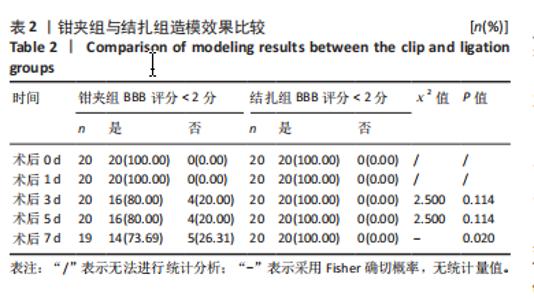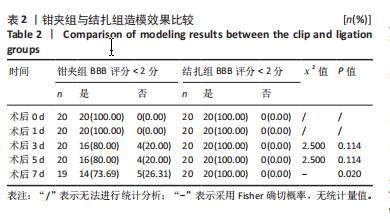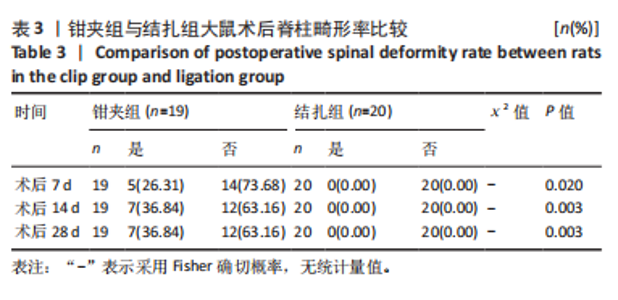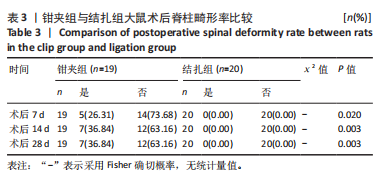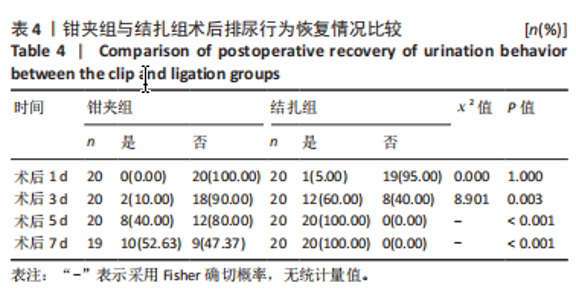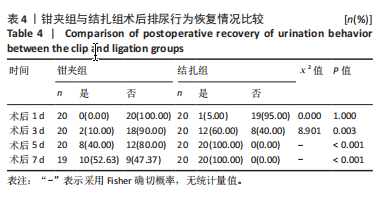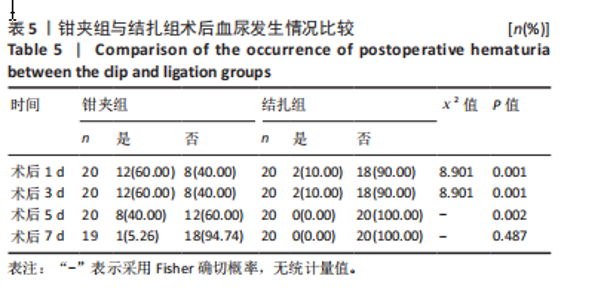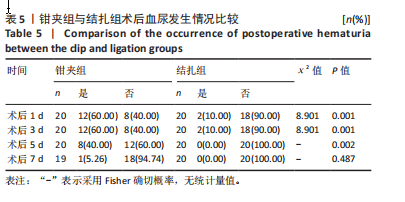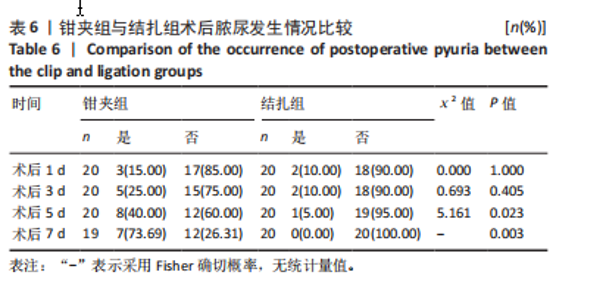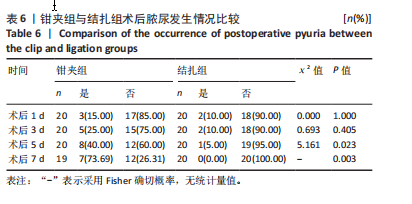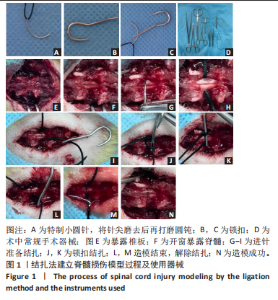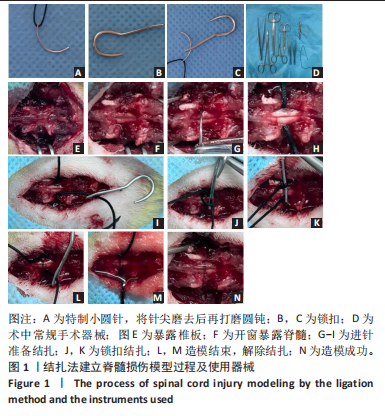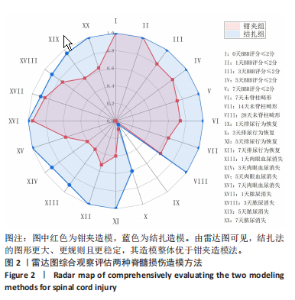[1] HARDY CC, KORSTANJE R. Aging and urinary control: Alterations in the brain–bladder axis. Aging Cell. 2023;22(12):e13990.
[2] ANDERSON MA, O’SHEA TM, BURDA JE, et al. Required growth facilitators propel axon regeneration across complete spinal cord injury.Nature. 2018;561(7723):396-400.
[3] 刘媛, 龙在云,李森.创伤性脊髓损伤动物模型研究进展[J].中国临床神经科学,2020,28(4):475-480.
[4] 齐英娜,谭明生.脊髓损伤动物模型的研究现状[J].中国矫形外科杂志,2018,26(10):927-929.
[5] LI W, TANG T, YAO S, et al. Low-dose Lipopolysaccharide Alleviates Spinal Cord Injury-induced Neuronal Inflammation by Inhibiting microRNA-429-mediated Suppression of PI3K/AKT/Nrf2 Signaling. Mol Neurobiol. 2024;61(1):294-307.
[6] HU X, XU W, REN Y, et al. Spinal cord injury: molecular mechanisms and therapeutic interventions. Signal Transduct Target Ther. 2023;8(1):245.
[7] HAN B, LIANG W, HAI Y, et al. Neurophysiological, histological, and behavioral characterization of animal models of distraction spinal cord injury: a systematic review. Neural Regen Res. 2024;19(3):563-570.
[8] 陈伟,羊明智.实验性脊髓损伤动物模型的制备及研究进展[J].中国矫形外科杂志,2014,22(6):520-523.
[9] 姬笑颜, 李含笑,刘西纺.挫伤型脊髓损伤动物模型制作方法研究进展[J].实验动物科学,2021,38(2):70-73.
[10] 魏荣志, 王玉玞,闫景龙.大鼠脊髓损伤模型研究进展概述[J].神经损伤与功能重建,2020,15(5):274-277.
[11] 杜凯然, 邓强, 郭铁峰, 等. 改良椎板切除法构建脊髓损伤模型大鼠[J].中国组织工程研究,2023,27(32):5173-5177.
[12] DA COSTA ES, CARVALHO AL, MARTINEZ AM, et al. Strapping the spinal cord: An innovative experimental model of CNS injury in rats. J Neurosci Methods. 2008;170(1):130-139.
[13] VIJAYAKUMAR SREELATHA H, PALEKKODAN H, FASALUDEEN A, et al. Refinement of the motorised laminectomy-assisted rat spinal cord injury model by analgesic treatment. PLoS One. 2024;19:e0294720.
[14] 孙德日, 胡慧媛,朱悦.改良脊髓半横断损伤大鼠模型的建立及评价[J].中国医科大学学报,2017,46(3):223-237.
[15] 吴杨鹏, 范筱,张俐.急性脊髓损伤动物模型的建立与评估[J].中国组织工程研究,2016,20(49):7341-7348.
[16] 鲍丙波, 付凯, 朱晓中, 等. 器械打磨法制备大鼠脊髓损伤后重建排便功能模型的实验研究[J].中国修复重建外科杂志,2016,30(9): 1139-1142.
[17] DAI P, HUANG SQ, TANG CL, et al. Effects of electroacupuncture at “Jiaji”(EX-B2) on autophagy and endoplasmic reticulum stress in spinal cord injury mice. Zhen Ci Yan Jiu. 2021;46(1):45-51.
[18] 敖丽, 周逸敏,张俐.血脊髓屏障模型的制作技术与方法研究进展[J], 中国中医骨伤科杂志,2021,29(9):85-88.
[19] 杨祝歆, 唐成林, 赵鸿娣,等. 转录组测序结合TMT蛋白质组学技术对脊髓损伤小鼠关键基因预测及相关病理机制研究[J].重庆医科大学学报,2023,48(10):1149-1158.
[20] MODI AD, PAREKH A, PATEL ZH.Patel Methods for evaluating gait associated dynamic balance and coordination in rodents.Behav Brain Res. 2024:456:114695.
[21] VEDANTAM A, UGILIWENEZA B, WILLIAMSON T,et al. Evolving Profile of Acute Spinal Cord Injury Demographics, Outcomes, and Surgical Treatment in North America: Analysis of a Prospective Multi-Center Dataset of 989 Patients. J Neurotrauma. 2023;40(17-18):1948-1958.
[22] ZHOU H, LOU Y, CHEN L, et al. Epidemiological and clinical features, treatment status, and economic burden of traumatic spinal cord injury in China: a hospital-based retrospective study. Neural Regen Res. 2024; 19(5):1126-1133.
[23] HEJRATI N, AARABI B, NEAL CJ, et al. Trends in the Use of Corticosteroids in the Management of Acute Spinal Cord Injury in North American Clinical Trials Network Sites. J Neurotrauma. 2023;40(17-18): 1938-1947.
[24] 文弟生, 罗文东,赵刚.脊髓出血性损伤动物模型建立的研究进展[J], 世界最新医学信息文摘,2019,19(27):36-41.
[25] WALKER MJ, WALKER CL, ZHANG YP, et al. A novel vertebral stabilization method for producing contusive spinal cord injury. J Vis Exp. 2015;(95): e50149.
[26] WANG XH, JIANG C, ZHANG YY, et al. Analysis and comparison of a spinal cord injury model with a single-axle-lever clip or a parallel-moving clip compression in rats. Spinal Cord.2022;60(4):332-338.
[27] 裴双, 王琳, 陈雪梅, 等. 骨髓间充质干细胞来源的外泌体静脉移植对脊髓损伤的修复作用[J]. 中国脊柱脊髓杂志,2017,27(12):1119-1127.
[28] VAHABI A, ÖZTÜRK AM. Conducting spinal cord injury model with clip compression in rodents: Pearls and pitfalls. MethodsX. 2023:10:102231.
[29] YAN WH, TAN MS, HUANG C, et al. Neuroprotective effect and mechanism of cPLA2 inhibitor increases autophagic flux on spinal cord injury. Zhongguo Gu Shang. 2023;36(9):873-879.
[30] DABNEY KW, EHRENSHTEYN M, AGRESTA CA, et al. A model of experimental spinal cord trauma based on computer-controlled intervertebral distraction: characterization of graded injury. Spine (Phila Pa 1976). 2004;29(21):2357-2364. |


